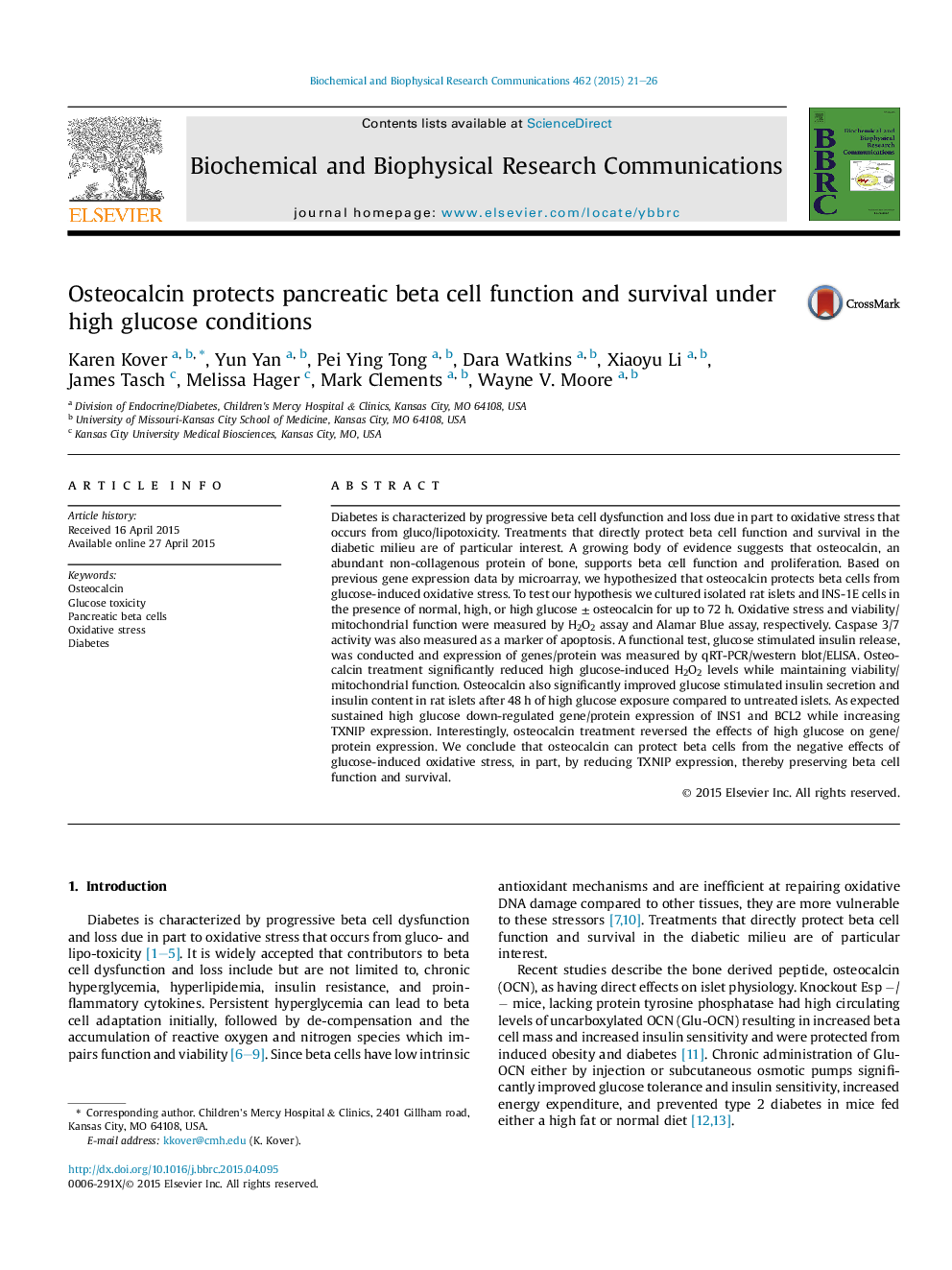| Article ID | Journal | Published Year | Pages | File Type |
|---|---|---|---|---|
| 10751382 | Biochemical and Biophysical Research Communications | 2015 | 6 Pages |
Abstract
Diabetes is characterized by progressive beta cell dysfunction and loss due in part to oxidative stress that occurs from gluco/lipotoxicity. Treatments that directly protect beta cell function and survival in the diabetic milieu are of particular interest. A growing body of evidence suggests that osteocalcin, an abundant non-collagenous protein of bone, supports beta cell function and proliferation. Based on previous gene expression data by microarray, we hypothesized that osteocalcin protects beta cells from glucose-induced oxidative stress. To test our hypothesis we cultured isolated rat islets and INS-1E cells in the presence of normal, high, or high glucose ± osteocalcin for up to 72 h. Oxidative stress and viability/mitochondrial function were measured by H2O2 assay and Alamar Blue assay, respectively. Caspase 3/7 activity was also measured as a marker of apoptosis. A functional test, glucose stimulated insulin release, was conducted and expression of genes/protein was measured by qRT-PCR/western blot/ELISA. Osteocalcin treatment significantly reduced high glucose-induced H2O2 levels while maintaining viability/mitochondrial function. Osteocalcin also significantly improved glucose stimulated insulin secretion and insulin content in rat islets after 48 h of high glucose exposure compared to untreated islets. As expected sustained high glucose down-regulated gene/protein expression of INS1 and BCL2 while increasing TXNIP expression. Interestingly, osteocalcin treatment reversed the effects of high glucose on gene/protein expression. We conclude that osteocalcin can protect beta cells from the negative effects of glucose-induced oxidative stress, in part, by reducing TXNIP expression, thereby preserving beta cell function and survival.
Related Topics
Life Sciences
Biochemistry, Genetics and Molecular Biology
Biochemistry
Authors
Karen Kover, Yun Yan, Pei Ying Tong, Dara Watkins, Xiaoyu Li, James Tasch, Melissa Hager, Mark Clements, Wayne V. Moore,
